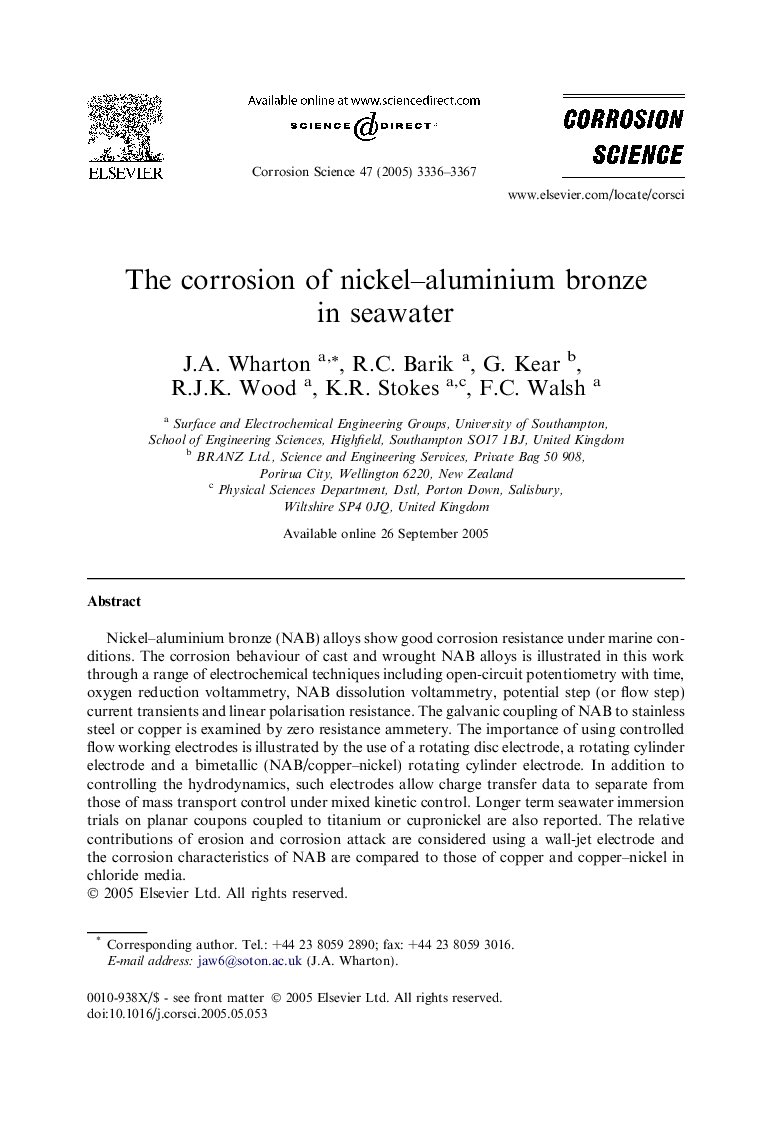| Article ID | Journal | Published Year | Pages | File Type |
|---|---|---|---|---|
| 1472459 | Corrosion Science | 2005 | 32 Pages |
Nickel–aluminium bronze (NAB) alloys show good corrosion resistance under marine conditions. The corrosion behaviour of cast and wrought NAB alloys is illustrated in this work through a range of electrochemical techniques including open-circuit potentiometry with time, oxygen reduction voltammetry, NAB dissolution voltammetry, potential step (or flow step) current transients and linear polarisation resistance. The galvanic coupling of NAB to stainless steel or copper is examined by zero resistance ammetery. The importance of using controlled flow working electrodes is illustrated by the use of a rotating disc electrode, a rotating cylinder electrode and a bimetallic (NAB/copper–nickel) rotating cylinder electrode. In addition to controlling the hydrodynamics, such electrodes allow charge transfer data to separate from those of mass transport control under mixed kinetic control. Longer term seawater immersion trials on planar coupons coupled to titanium or cupronickel are also reported. The relative contributions of erosion and corrosion attack are considered using a wall-jet electrode and the corrosion characteristics of NAB are compared to those of copper and copper–nickel in chloride media.
